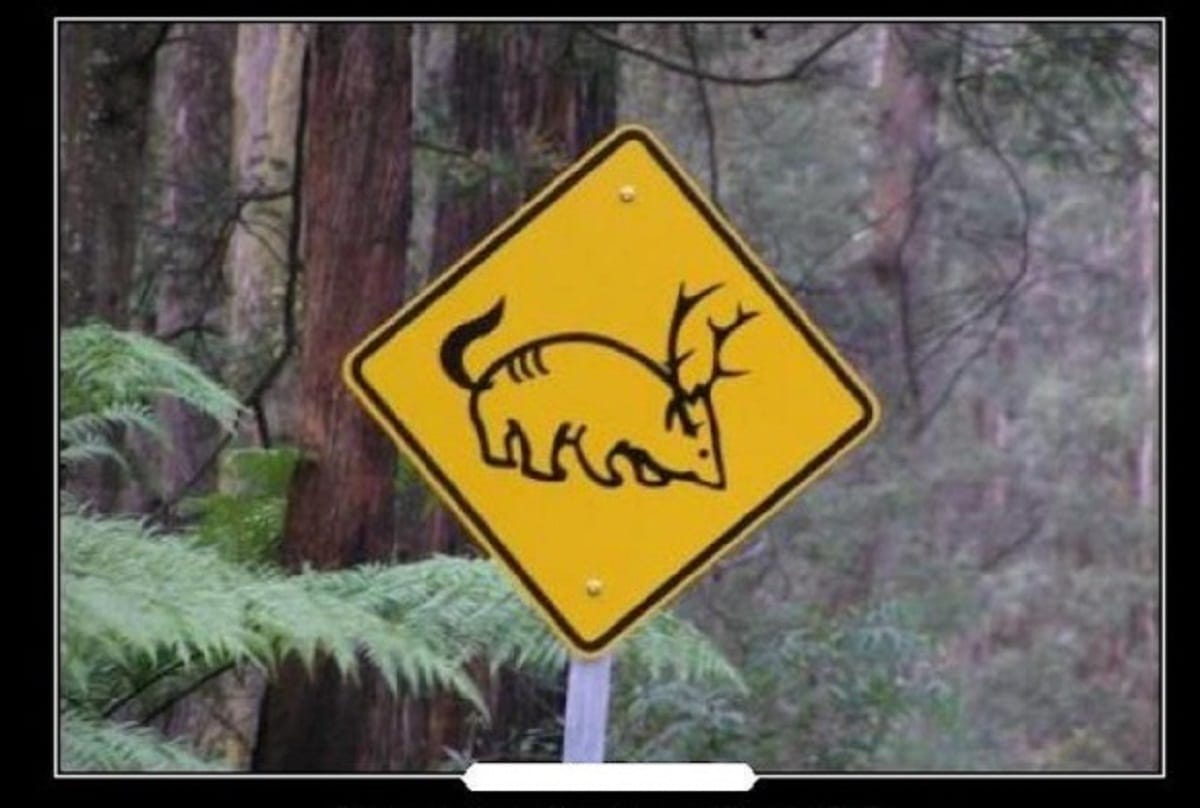
The gamusino is a imaginary animal which is part of the legend of many cultures: Spain, Portugal, Latin America, England... There are regional variants of this mythological animal but in all cases there is a common element around it: the hunting of gamusinos, a traditional practice in Spain and other countries It's just a joke for fun.
But there is much more to say about this fictional animal and the lore surrounding it. If you want to know more about what is a gamusino and the curious traditions that surround it, stay and you will discover it in this post.
The gamusino: story of a legendary animal

The gamusino is a non-existent animal that remains in the collective imagination of many regions due to the legend and tradition cultivated around it. As a mythological creature that he is, does not have a clearly defined appearance or habitat. Different definitions have been made: for some it is a terrestrial animal, for others a bird, even an aquatic animal... but it seems that the most widespread version is the terrestrial one, resembling the marten o martensAt least that is how it is known in almost all of Spain and Latin America.
Even the RAE has created a space for this legendary creature, defining it as “imaginary animal, whose name is used to prank novice hunters”. Write down similar terms according to the region of Spain, so the RAE recognizes their regional variants: mush (in Extremadura), gambusino (In Andalucia), gambozin (in Portugal), Donyet, gambosi o gambutzi (in Catalonia and Valencia) which means "dwarf so tiny it's barely visible". And the last Catalan variant - collected in the work costumemari català (1950) by Joan Amades- where gambosi o gabuzo means "deception".
Despite all its variants and definitions, what does exist in common in all countries is the tradition that surrounds it: it is used to play pranks on children, strangers or hunters by celebrating their hunt, the famous "gamusino hunt".
According to the oldest versions of the term, these jokes were originally made to travelers and strangers. This is how it appears in the dictionary of Gabriel Garcia Vergara from 1929, one of the oldest archives of the RAE. But currently - in Spain - the practice of hunting gamusinos is a joke that is only done with children in summer camps and various celebrations as a game and fun.
Although we have seen that the history of the gamusino originates mainly in Spain and Latin America, this legend has crossed borders and has settled in other countries. That's how it is, the gamusino and its hunting has become international: in Germany they try to catch the elwetritsch, in France and Switzerland they go in search of the dahu and in the United States they go hunting for the snipe. Proof of this we find in the film of Pixar, “Up”: in the Spanish version, the old man carl fredricks he sends scout Russell to "hunt gamusinos" to get rid of him, while in the English version he sends him to do it snipe hunt. We see that the gamusino has even reached the big screen.
the hunting of the gamusino
Currently in Spain the hunting of gamusinos has a definite ritual and it is a game oriented to children. The sociocultural animator See me Paulino Velasco tell what it consists of. Velasco has spent years organizing the gamusino hunt in Villanubla (Valladolid), where it is held every summer. According to him “Young people who went camping have been held here for decades and, since the early 2000s, we began to organize it as an activity in the town.” The animator tells us how the hunting of gamusinos develops:
- An activity is organized with young children in which a hunt is pretended on a summer night. For this they take lanterns and a sack where the hunted gamusinos will be kept. The group of children is led to the bank of a stream, which is where it is supposedly easier to find them. There they are made to sing a song to attract them: “gamusinos al morral” or “gamusino enters the bag, one, two, three, four”, there are different versions. Suddenly one of the adults will approach a thicket in which he has detected movements that show that there are hidden gamusinos there. Then one of the monitors pretends to capture one by putting stones in the bag or any other object that takes up space.
- The children are amazed and this is where the motivation to hunt one is awakened. But here you have to calm them down a bit and explain to them that you have to wait for the animals to fall asleep to take them out of the sack. To make the wait more enjoyable while they maintain the illusion of having caught one or several specimens, different games are organized to distract them. It is at that moment when it is used to make a hole in the bag and remove the stones or objects introduced into it. Later the children are notified of what happened, making them believe that while they were playing, the gamusinos have broken the sack and escaped.

Velasco explains that now the tradition is more "friendly" and has eliminated any violent element, since it is aimed at children: "Before, he also left with sticks, for example". The versions of the "caza de gamusinos" of years ago were made to make fun of outsiders and they were much harsher and crueler.
A reflection of this is found in the book Popular culture of the Calatayud community (Zaragoza) that collects the tradition of the region: it tells that what was introduced into the sack to deceive outsiders was a dog. The waiters convinced the stranger by secretly explaining that they were going to hunt a very valuable and difficult to capture animal. They spread out across the countryside and simulated their hunting by putting a peaceful dog inside the sack that the victim had to carry on his shoulders to the town square. There the sack was opened publicly and the teasing of the stranger was evident between laughter and general joking among the townspeople.
Etymology of the term "gamusino"

the linguist Jose G. Moreno de Alba He was a member of the Mexican Academy of Language and dedicated a chapter of his book "Sum of language minutiae" to the gamusinos, where he analyzes the etymological origin of many words, one of them the possible origin of the term "gamusino".
Explain that the word "gamusino" could have a relationship with the Mexican term "gambusino", which was used in the XNUMXth century to refer to gold prospectors. Linguists established a relationship of this word with English words gamble (play or bet) and business (business). It makes sense, because the hunting of gamusinos contains something like a bet or challenge to hunt an elusive animal by organizing or negotiating its hunting.
In this line, Moreno relates in his work that "Hunting or fishing gamusinos can then be something like go after the impossible or waste time”. “The phonological resemblance of the voices gamusino and gambusino is evident [...], and it does not seem too daring to see a certain semantic similarity between fishing or hunting gamusinos (going after non-existent animals, going after the impossible) and the work of the gambusino, which, as We know very well that he always pursues the gold rush.”
At general file of the RAE, there are 16 ballots on “gamusino”. One of them defends another possible origin, a variation of "fallow deer: "The fallow deer is difficult to hunt and it is understandable that a fallow deer, which can be referred to as a fallow deer, is something illusory to be hunted by a naive or novice hunter."
As we have just seen, the history of this fictional animal is quite varied and diffuse. We hope that through these lines you have been able to clarify your curiosity about what is a gamusino and its legendary history.